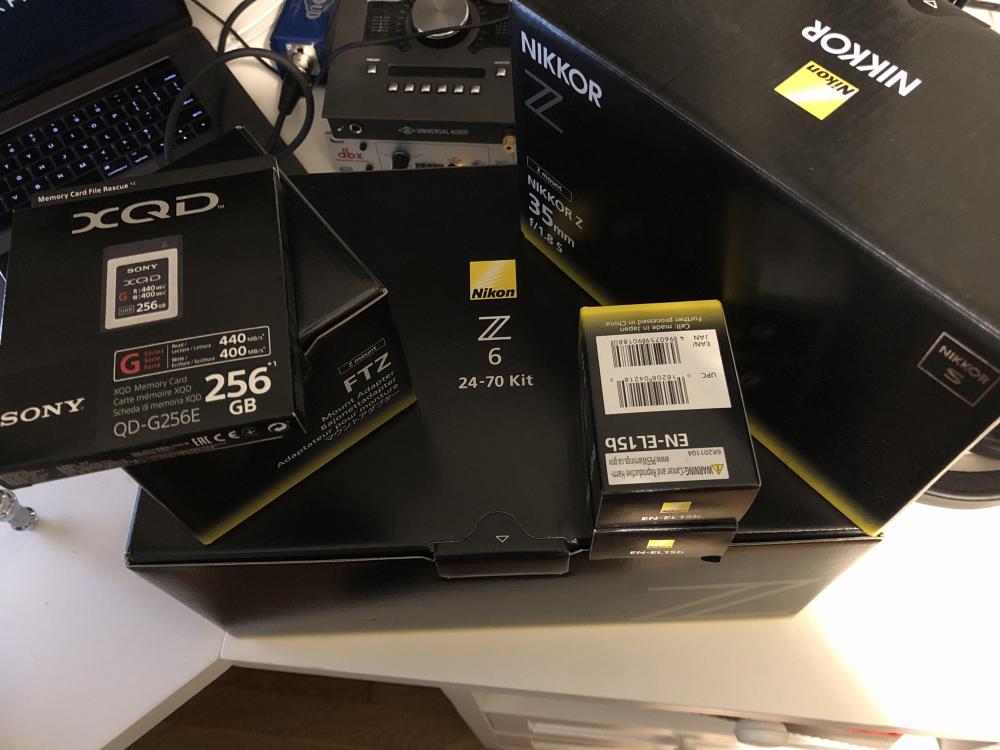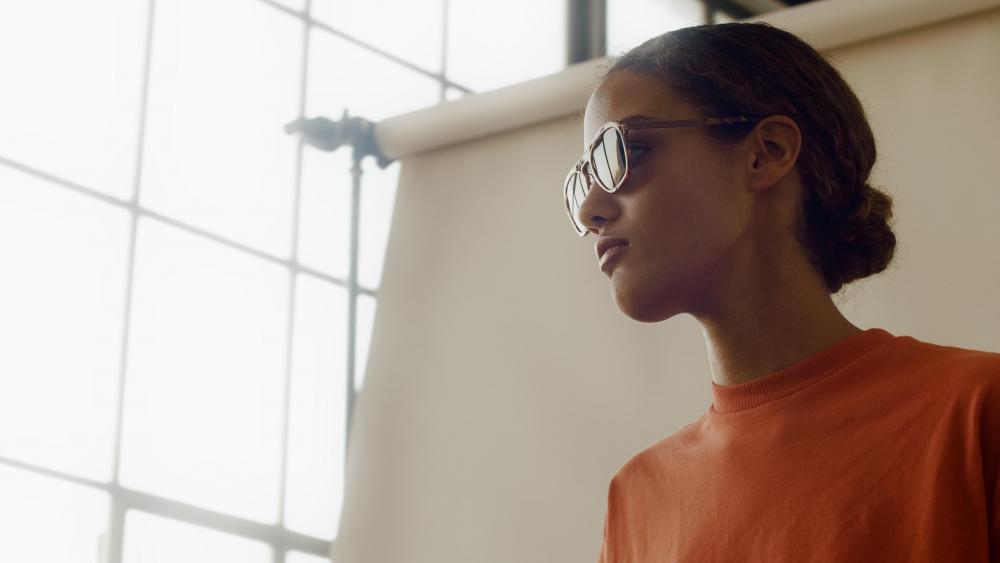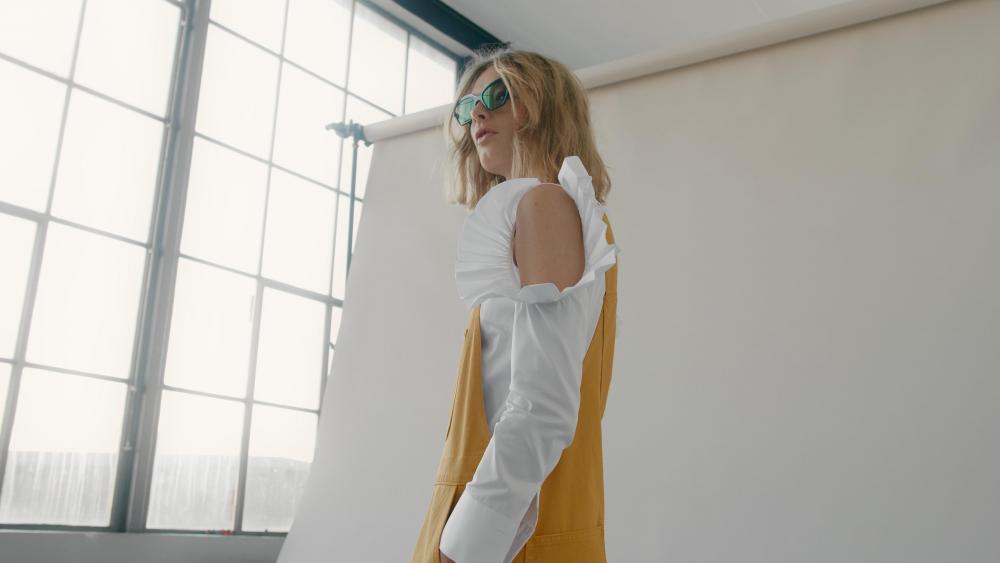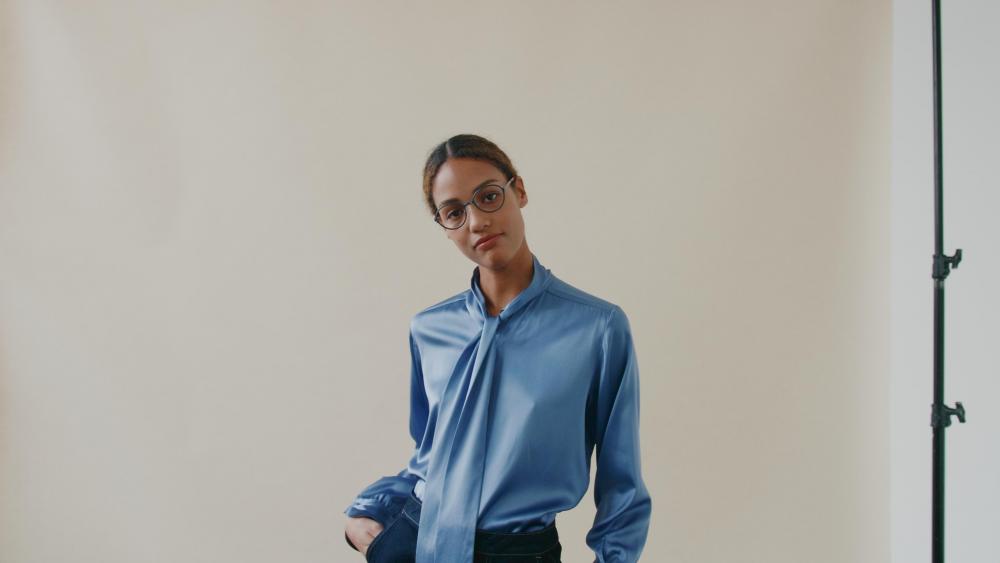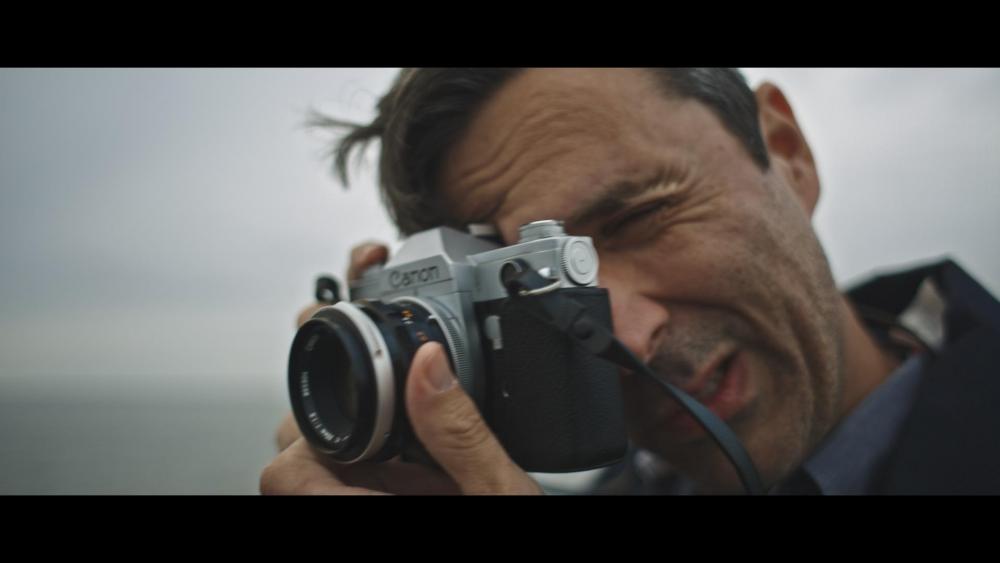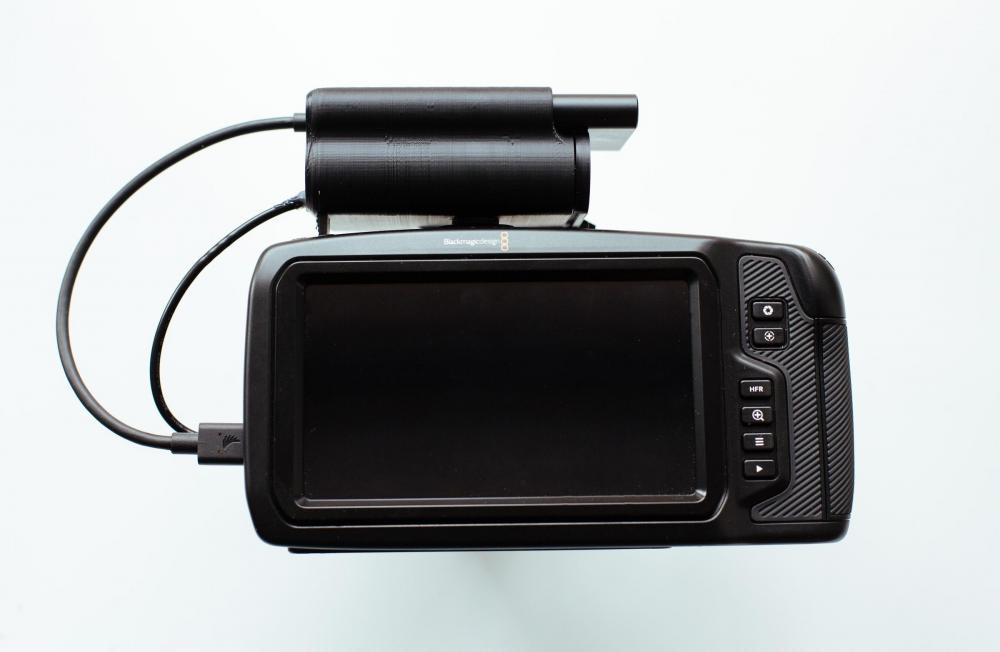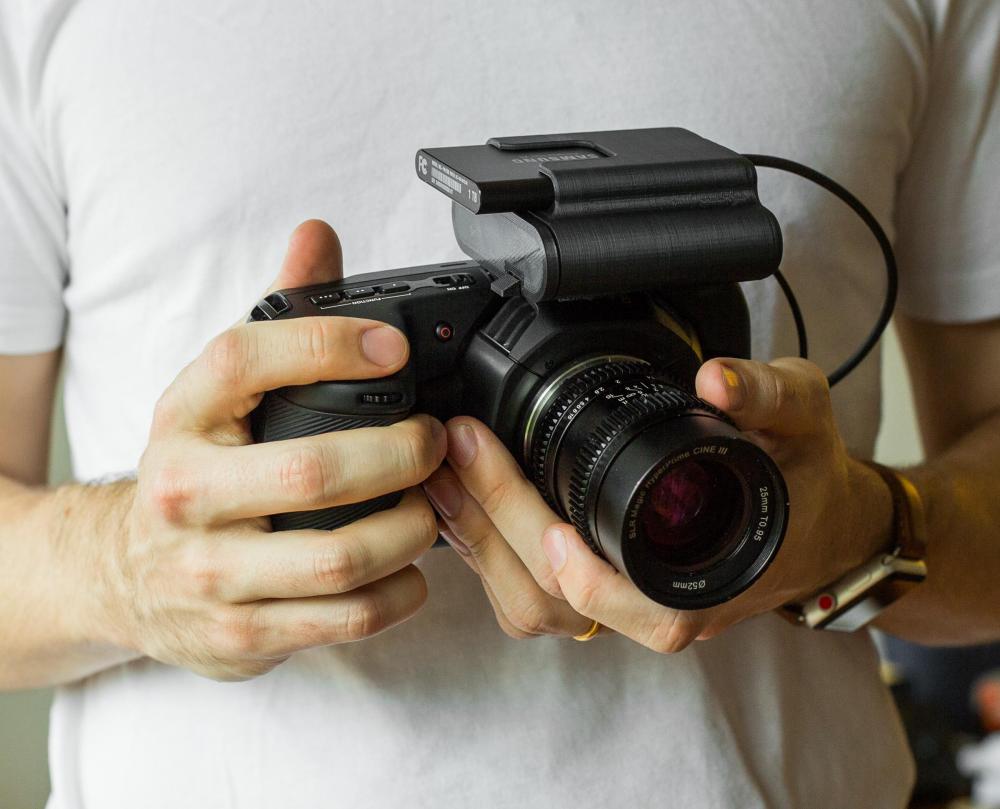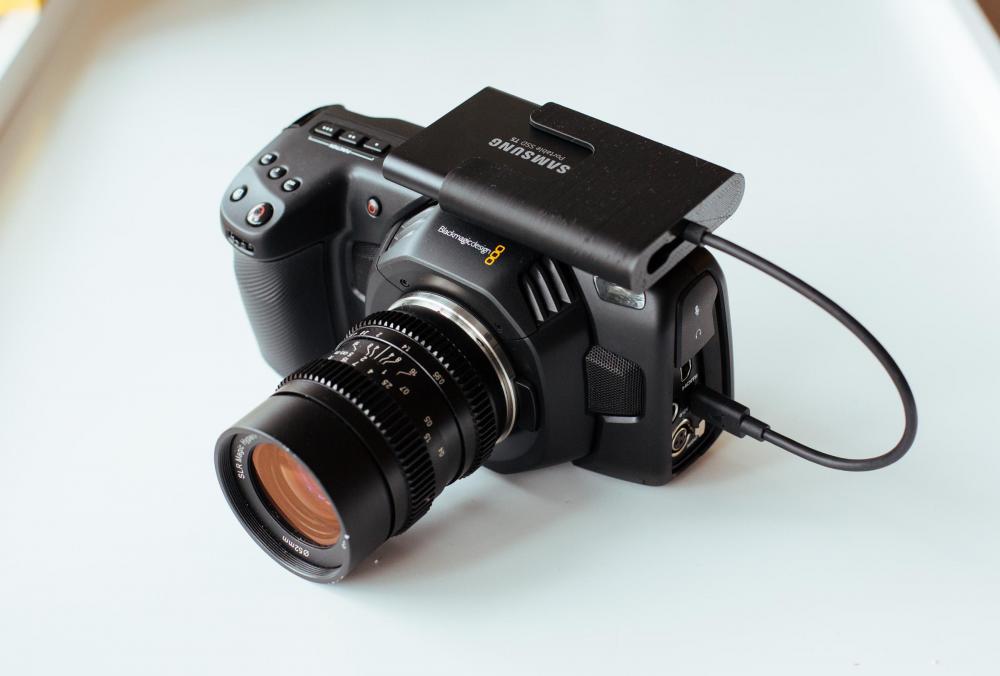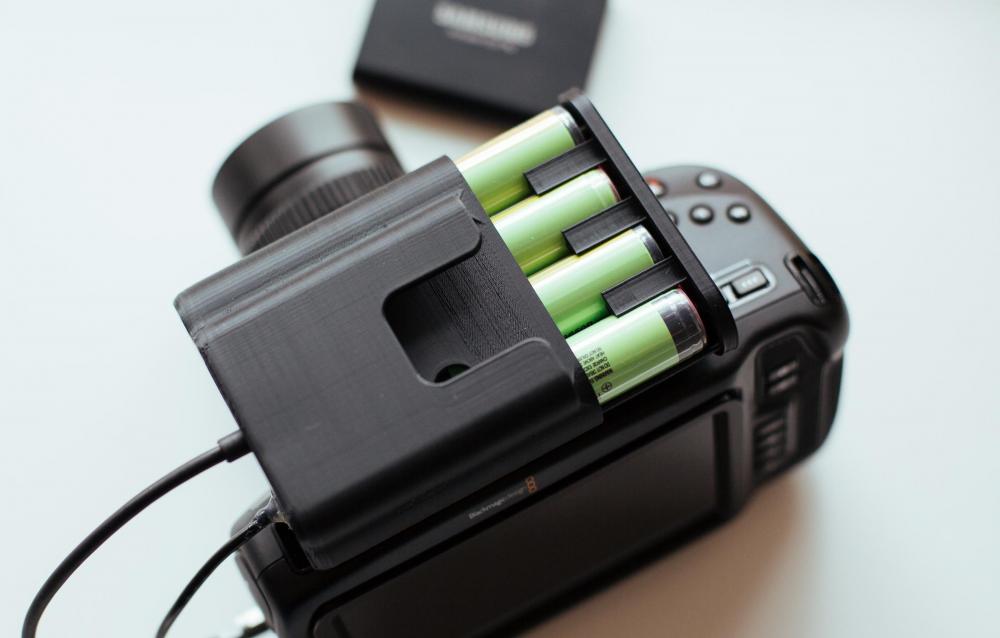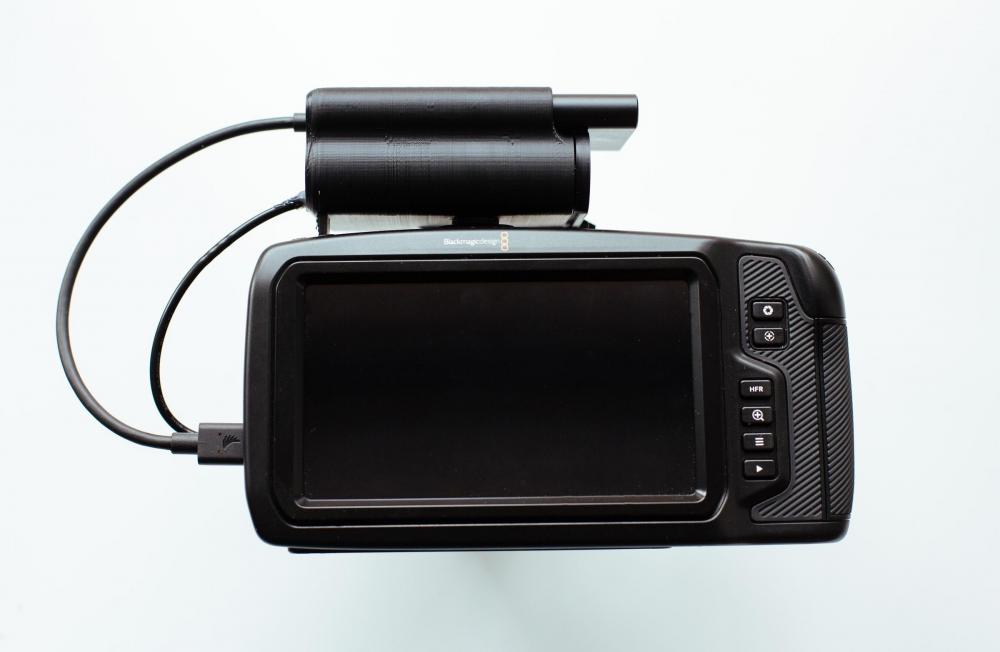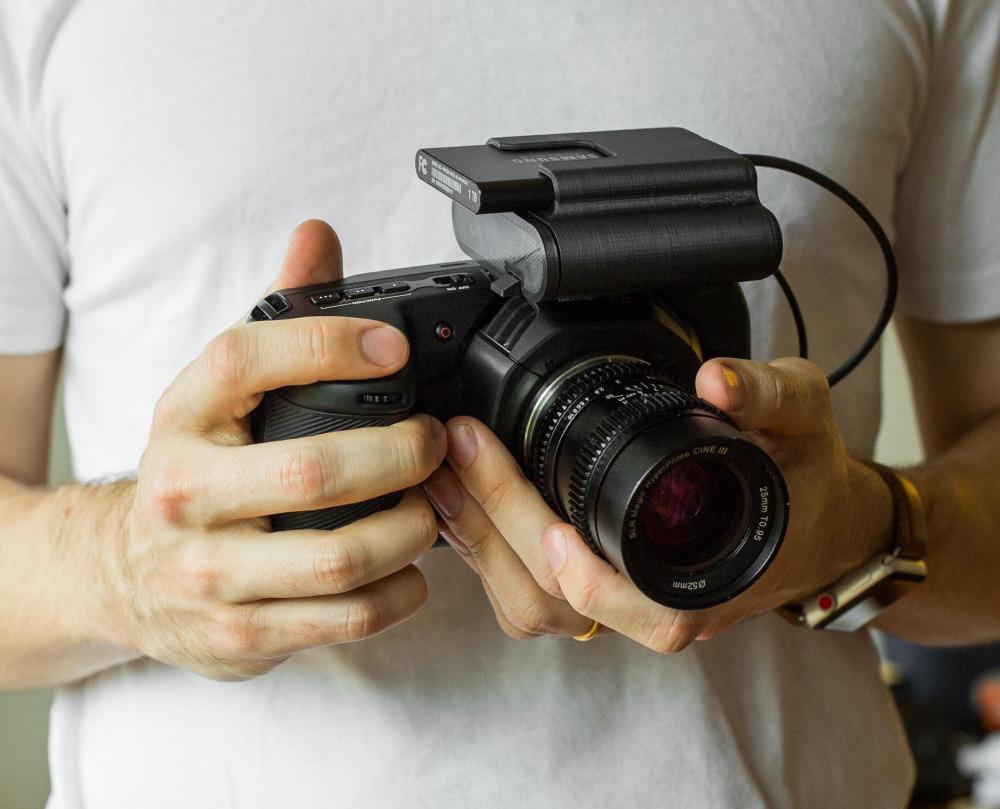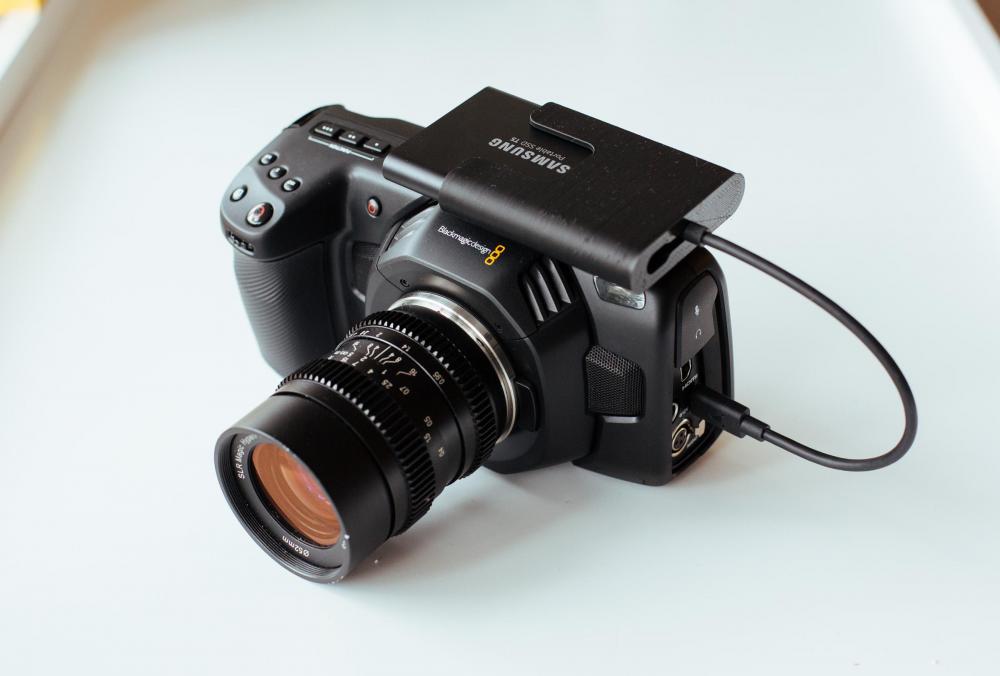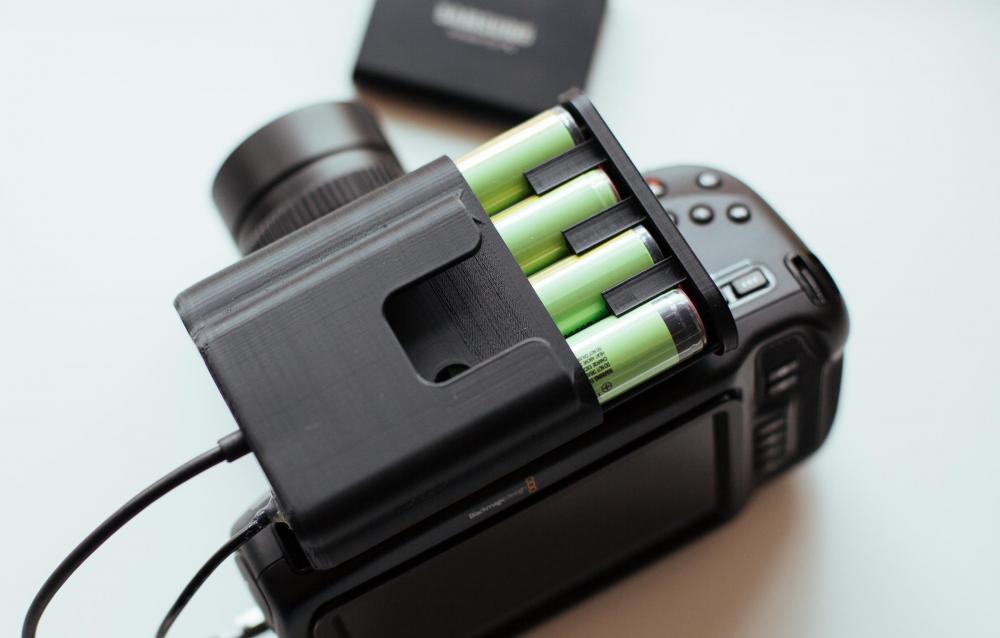Leaderboard
Popular Content
Showing content with the highest reputation on 11/21/2018 in all areas
-
Midtone Detail in Resolve - Thoughts?
TheRenaissanceMan and 3 others reacted to Shirozina for a topic
I call it the 'zeiss look' slider4 points -

GH5 to Alexa Conversion
Jonesy Jones and 3 others reacted to FinnChristianPeper for a topic
4 points -
That may be true now, but the way I understand it is that it's a shrinking market and that kind of split may not be the recipe for sustainability. Who knows of course, those with crystal balls (or steel balls) will be putting all their savings on the winning horse. Every successful YouTuber is clickbait royalty - that's just the reality of getting new subs and keeping ahead of the others - look at the UK tabloids (and sensationalist media the world over) and tell me that it isn't a successful strategy. What I like about Tony is that he isn't afraid to say things, isn't afraid to predict things, but in addition to those traits (that are shared with nearly all YouTubers) he's also level-headed, admits when he's wrong, and explains his thinking so that you can understand why he came to the conclusions he did. Even if he gets things wrong he definitely adds to the conversation rather than just taking up your time and contributing nothing.3 points
-
Over on PV Forums then @eatstoomuchjam reports that with a little hacking he can already record ProRes HQ 4K on his Z Cam E2. Just needs a flag to be enabled in the existing firmware. So ProRes is already 100% ready to go on the E2, but Z Cam is waiting before enabling it.... probably just the final rubber stamping approval from Apple.3 points
-

Midtone Detail in Resolve - Thoughts?
kaylee and 2 others reacted to CaptainHook for a topic
FYI just in case you're not aware, midtone detail is also available in the primary tab and is not a raw tab exclusive control.3 points -
Midtone Detail in Resolve - Thoughts?
heart0less and 2 others reacted to mercer for a topic
Here’s a still I grabbed in Resolve from a shot I used Midtone Detail fairly liberally. Before I applied it, my actor didn’t look nearly as weathered. I’m having some display issues where I cannot get the exported image to completely replicate what I’m seeing in the timeline... but that’s a topic for another thread... And I’m really just starting to scratch the surface of the cool tricks Resolve can do. I also just realized that I can copy a grade from a still I grabbed... what a timesaver. I can’t see myself completely using Resolve as an NLE but as an intermediary before bringing the footage into FCPX, definitely!3 points -
What Do Y'all Think of The Kinefinity Mavo LF?
capitanazo and 2 others reacted to AlexTrinder96 for a topic
Some nice footage here, colours look seriously impressive! Shot at iso:10240...3 points -
I'd like to be a better DOP, audio technician, editor, and colourist.. ??? Unfortunately, skills aren't on sale!3 points
-

What Do Y'all Think of The Kinefinity Mavo LF?
maxmizer and one other reacted to Raafi Rivero for a topic
This is kind of a ridiculous statement. Not sure how you can make such a sweeping judgment not having shot on the camera. re: S35 vs Full-Frame - one of the cool things about shooting on a full-frame camera like the Mavo LF is you can always bump down to S35 mode and shoot on a traditional frame size in 4k at any time. I did it the other day.2 points -

Moza Air 2 the complete package?
Raafi Rivero and one other reacted to chrisE for a topic
An important factor for gimbals is not only the weight capacity but even more how they handle very front heavy and long setups. For example the new Weebill Lab. It's a great gimbal, great design, but it cannot stabilize a Sony A7III with the 24-70GM, neither the 24-105/F4, and most probably not even the 16-35GM. You might be able to balance such a setup, but the movements will be wobbling and unusable. According to the official specs regarding weight capacity, all the mentioned combinations should work, but in reality, they don't. Of course you can use a light prime lens to avoid this issue, but for me personally, this is a dealbreaker for the Weebill Lab, unfortunately. If the Crane 3 or the Moza Air X solves this problem and provides a better experience than the Ronin S (which handles almost every possible setup), remains to be shown. I really love my Ronin S, but hate it the same time for the weight. Not because I can't carry it, but because it's so much harder for traveling. Any gimbal that is lighter and more compact, would be highly appreciated, if(!) it can handle those "light", but very front heavy mirrorless setups.2 points -
A cross between the P4K and the XC would be ideal.2 points
-
Saw a discussion about this on Facebook in the EVA1 owners group, some are quite sad at how far the prices of EVA1 have fallen recently! As a non-EVA1 owner this however is good news :-P2 points
-
2 points
-
Nikon Z6 features 4K N-LOG, 10bit HDMI output and 120fps 1080p
Mark Romero 2 and one other reacted to Castorp for a topic
I disagree with this. I would most of the time prefer an f4 zoom to an f2.8. Weight and size are important things. Even if I had unlimited money. I often prefer f1.8 primes to f1.4. I don’t know what other people do, but I hike a lot. There is no way I am carrying that huge heavy glass for a bit more light. I’d rather put those grams into a tripod than carry a super fast super heavy prime that gives me marginally more capability (nothing compared to said tripod). Fast primes are for the ability to get an extra stop or so when hand holding or needing a fast shutter. Or sometimes if the background is terrible and you want to blur it out (although in my experience this should be avoided as much as possible since the background often tells the story). Thats why I find Canons R release of first lenses very strange. I’m sure the optics are beautiful but it’s incredibly rare that the tiny bit of extra light is worth the huge weight. Talk about diminishing returns. The little 35 they released is not top quality L glass, unlike the Nikkor 35 & 50 “S” (for super) f1.8. Some are confused and seem to think these lenses is like your 150$ plastic f1.8. Not the case. I applaud that I get the option of slower, but still top of the line quality glass. I hope that continues and I hope we get top quality 800-1200$ f4 or even f5.6 primes. Along with the fast stuff for those who need it. IBIS does not replace fast glass, but sure does replace the need for it some of the time.2 points -
Replicating 'big camera' feel with small camera
jgharding reacted to austinchimp for a topic
I find that one of the main differentiators in feel between small mirrorless or DSLRs and larger cameras like the Alexa is the movement of the camera itself when it's handheld. Small cameras have that horrible jittery shaky distracting motion while larger cameras can feel 'cinematic' even while they're being carried while running for example, and using unstabilised lenses. Like in this clip at 1'35. The obvious factor is rolling shutter, but assuming that my camera has low rolling shutter, how best to replicate this look and feel with - say - a X-T3? Two things I want to avoid are shoulder mounting, and making a big rig. I've thought about actually weighing the camera down somehow, or perhaps using a handle mounted on the top to avoid the usual mirrorless shooting position of holding it out in front of you. Any ideas??1 point -
My Friends over at arri told me they don't know you.1 point
-

Blackmagic Pocket Cinema Camera 4K
TurboRat reacted to webrunner5 for a topic
That might be true, but I am still looking I think at buying a Canon C100. Just a lot less hassle battery, buttons, memory space, and even grading wise.1 point -

Z Cam E2 will have ONE HUNDRED AND TWENTY FPS in 4K??
androidlad reacted to sanveer for a topic
Holy F@ck !!! Sony sensors are a camera designers wet dream. I wish I was working with a start-up that was in the imaging space. The sheer number of camera sensor choices is Insane. At every size and imaginable spec.1 point -

Panasonic announcing a full frame camera on Sept. 25???
KnightsFan reacted to IronFilm for a topic
Exactly. How useful is it? And if MFT gives the performance we need, then do we need to go extreme with FF sensors? Look at the stills world, APS-C sensors already give all the photographic performance that 99% of us need (More people realizing that is what Fujifilm is betting on. With MF for the 1%, and the rich doctors/dentists/lawyers/hipsters)1 point -
Best gimbal for Pocket 4K?
webrunner5 reacted to Anaconda_ for a topic
Here's another quick test with the Weebill. This time with the nifty fifty.1 point -
1 point
-
Z Cam E2 will have ONE HUNDRED AND TWENTY FPS in 4K??
AlexTrinder96 reacted to KnightsFan for a topic
The GS variant will probably have even fewer takers. It has a 1" sensor, lower frame rates, and less dynamic range. Basically, the RS version will be better in every way except that one feature, so I doubt it will influence sales of the RS version much.1 point -
Replicating 'big camera' feel with small camera
TheRenaissanceMan reacted to BenEricson for a topic
Agreed. I was using the F3 with the 7Q for a while. You get really nice heavy and smooth movements with that setup. The way the camera settles is different than a camera with no weight. Surprised so many people would recommend steady cams and Ronins? There’s no need to complicate things. You need a well balanced rig that weights 7/8 pounds.1 point -
Replicating 'big camera' feel with small camera
austinchimp reacted to Inazuma for a topic
Put the camera on a large gorillapod and use it as a chest/shoulder mount1 point -
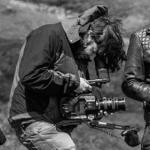
Moza Air 2 the complete package?
Raafi Rivero reacted to Oliver Daniel for a topic
I have this package. Didn’t buy it all from scratch, they kindly upgraded it from the previous generation for free. I’ve had little time with it, however I can say that it’s an incredibly innovative device and can accomplish shots you can’t do with anything else. No probs so far, will be happy to report more when I’ve had more experience.1 point -
Weight is part of it, an Alexa weight a ton as do the lenses usually, most often it'll be on easy rig or steadicam vest or both. If not it's on a big tripod. The example looks great, but it does look like a small camera still, it's the quick jitter at the start I've tried using GH5 with Dual-IS2 and a Ronin S recently and it gets closer but it doesn't look like a heavy camera. So perhaps just add a load of lead ? Maybe a Ronin S in briefcase mode?1 point
-
What Do Y'all Think of The Kinefinity Mavo LF?
IronFilm reacted to AlexTrinder96 for a topic
1 point -
Replicating 'big camera' feel with small camera
heart0less reacted to seanzzxx for a topic
Using steadicams/glidecams as opposed to gimbals really does the trick I think, it adds a certain flow to the movement that is very filmlike in my opinion. Here's one example, all shot on a glidecam:1 point -
1 point
-
Modern lenses already resolve way more than we need for 4K video. This point you raised is almost irrelevant for us. They can duplicate a lot of tech across the camera ranges. Nearly all the main players are supporting at least two sensor sizes with their ILCs: Nikon/Canon/Pentax/Sony/FujiFilm/Leica/etc.... Sigma/Olympus/Panasonic were the odd ones out here. But now Sigma(probably?) and Panasonic will be joining the rest and having two different sensor sizes at once. (will be curious if Olympus stays focused purely on only the one sensor size: MFT. Or if they'll join L mount, or something else? I suspect they'll stay with MFT, but L mount odds are not too far behind, with anything else being unlikely) You mean Tony "The Clickbait King" Northup? Two whole stops? Don't just judge the noise of the image. Consider when the color accuracy with the image fulls apart. Panasonic holds up better, while Sony goes yuck at high ISOs. Then try pushing around in the grade the 10bit image of the Panasonic vs the 8bit of the Sony, then see how quickly your "two stops better" Sony image falls apart. Then remember also you need to stop down your lens two stops to have the same working DoF as the GH5S, unless you hate your 1st AC?? The real life difference is much smaller between a GH5S and a7Smk2, I'd even argue the GH5S is better in lowlight to shoot with.1 point
-
Also like it and what the camera offers. But quite happy with what current cameras from other brands offer so also not in a hurry Relax dude not saying P4K is trash lol I just said I'm gonna wait til next year, aside from the problems posted, it's also out of stock1 point
-
Oh yes, the RED ONE M (before it got the new MX sensor) was pretty bad, although my friend still shoots quite a lot with it! Sure, for indie filmmakers and little corporate shooters who don't care about all the flaws the C200 has vs the C700. Such as: no 10bit codec, no SDI/HDMI at once (WTF???), no TC, etc No. For YOU personally then the MAVO LF is unable to justify its price. And on that point I fully agree with you. It doesn't sound like it is the right camera for you. But I still claim the MAVO LF has a place in the market for filmmakers who want a very high end specced camera for a drastically lower price. (just like BMD does with their cameras such as the UMP, which has many many fans on this forum) Check out my post over in the Z Cam E2 thread. ProRes already exists right now in the Z Cam E2.1 point
-
I agree. $2000+ for the camera, when you can actually (pre-)order it for $800 less? Might as well get a Canon C100 or the Ursa and be done with it. Like some others, not in no rush to get it. Wait until all pre-orders are done for it to sell solid. The camera itself is looking good so far.1 point
-
The Black Friday deal that I want this year is...
IronFilm reacted to newfoundmass for a topic
I got my G85, lightly used, for $650 with two Olympus lenses that I sold for $200, so I ended up getting mine for $4501 point -
There will be a Sony A7S II successor. The bad news is - "it will take time"
IronFilm reacted to KnightsFan for a topic
@androidlad If half of the "leaks" you've posted are even close to the truth, I'll be absolutely floored. So it's going to be a 60 megapixel camera that shoots a full readout downsampled to 4k 60p, outputting RAW to the AXS-R7 recorder utilizing a quad-base ISO? Oh yeah, and the E to E mount focal reducers. You are saying that Sony--who lost the 10-bit photo/video hybrid race to Panasonic, Nikon and even Canon--and who currently maxes out at a 100 Mbps codec--is going to release a camera that leapfrogs the market, logic, and physics itself. If any of these are true, I'll be the first to admit you were right. But to say I'm skeptical is an understatement.1 point -

What Do Y'all Think of The Kinefinity Mavo LF?
webrunner5 reacted to sanveer for a topic
Wow. You're an encyclopedia of camera sensors. I now know who to contact if I ever make my own smartphone or ILC ???1 point -
The Black Friday deal that I want this year is...
leslie reacted to zerocool22 for a topic
pocket 4K in stock.1 point -

Blackmagic Pocket Cinema Camera 4K
jbsloan reacted to graphicnatured for a topic
I wish this would come out already.1 point -
Midtone Detail in Resolve - Thoughts?
kaylee reacted to KnightsFan for a topic
The only time i really used it was when i had a single outdoor shot between two indoor scenes. The outdoor shot was very busy with high frequency detail, especially in grass and leaves. The indoor shots had almost no hi frequency patterns. So i reduced midtone detail on the outdoor shot a little bit just to soften it, and make it stand out less.1 point -
good lavalier for gh5 interview
austinchimp reacted to Mmmbeats for a topic
Wired is ultimately better, but the convenience of wireless trumps it if you are shooting and recording yourself. Mic up the talent, stick the transmitter in his/her pocket, and get on with the million and one other things you have to take care of. Just do everybody a favour and take off the headphones if they pop to the loo!!! Can see the merits of wired too though. It's a close call.1 point -

good lavalier for gh5 interview
austinchimp reacted to IronFilm for a topic
It is a music video :-P There are times when wired lavs make sense (for instance I run an Aputure A.Lav straight into my G6 for my vlogs, because a) it is just for with me b) I'm lazy c) it is compact/cheap), but for most people/situations wireless makes more sense unless utterly broke.1 point -
Crazy how ebay sellers make more than double profit for selling BMPCC 4K cameras and people actually buy them almost instantly. We live in an impatient world.1 point
-
Not gonna wait for a perfect cam, just gonna wait until next year to get a P4K. Dont want to pay shipping to ship back a defective one to Blackmagic then pay again to ship it back to me. Samsung SSDs are really fast and been looking for a good 1TB deal for quite some time (already have the 250gb)1 point
-
- Battery getting stuck - - Battery doors suddenly opening (also happens to a coworker's P4K) - - red clipping - there's a workaround with resolve though - footage turning green I mean if P4K owners say it's perfect then it's perfect, and that these problems are isolated cases. In my opinion I'm gonna wait it out.1 point
-
Heard good things about the Firecrest There are still some kinks to iron out. So I'm gonna wait til next year for next production P4K. By then, there will be a ton of advice / workarounds for some of its problems. No rush to buy unless you really need that Blackmagic RAW.1 point
-

What Do Y'all Think of The Kinefinity Mavo LF?
Raafi Rivero reacted to IronFilm for a topic
I kinda agree with you, and I kinda disagree with you. As we can look at the BMD vs Kinefinity life cycles for quite a lot further back than just the current generation of cameras. Because they've both been making cameras for a while now. And it does seem like a pattern of Kinefinity releasing a camera, then BMD leap frogging them with a product. However.... don't stop there, but play it forward another step. And you see Kinefinity bring out a product which then springs back and beats BMD. And so on and so on this loop plays out. (with BMD/Kinefinity each releasing products) Thus I'll not at all be surprised if in six months time BMD announces a new camera which looks like it might be able to match up against the Kinefinity Mavo LF but at a lower price? However then it takes another six more months before the BMD product ships and gets it major kinds ironed out. And what has happened during those twelve months? Two things: 1) Mavo LF owners have had a whole year of working and shooting with the Mavo LF, earning money with it and pushing themselves further ahead creatively and professionally 2) Kinefinity has been keeping busy working on their next camera which they then announce, which is better than anything BMD has ever made And so the cycle carries again and again into the future! Another alternative way to look at it is like this: Neither company is "better" than the other. Instead they've taken two different philosophies as to how to make a camera, and cater to two different market niches. Just like RED and ARRI have their points of difference. Kinefinity has taken a compact (smaller even than the smallest RED build) and power efficient (thus you can use BP-U30 batteries!) approach with a modular design (like RED). A very different philosophy to BMD's URSA series of cameras.1 point -
If you Compare the very top end Nikon APS-C with FF you will see that the difference is very little. Considering that M43 and APS-C are much closer in size than APS-C and FF, you will realise that after a point the differences get Very small. There was an interesting article in Dpreview not so long ago showing that the difference between top FF and Medium Format also weren't as big. The advancements aren't 4 times as good in any possible direction. If they were all FF sensors would be in the range of 80MP or so. One doesn't need to shoot everything at super resolution or in super low light. That's more the exception than the rule.1 point
-
@Mark Romero 2 - here are my thoughts for shooting architecture / interiors, etc. with the A6500/NX1 (!). My claims base on own experience with some famous (and extremely picky about detail and resolution) architecture's offices and luxury real estate dealers, possessed by by "Gigapixel mania". These guys seem to have invented the pixel peeping... I own and use the A6500 and the NX1. As you know, these two cameras are exceptional in 4K when talking detail and sharpness - much "sharper" than even much more expensive dedicated video/production cameras. But...there is a price to pay for this sharpness - and the "micro-jitter" or "stroboscope effect" is one of the disadvantages. Sometimes, when shooting 4K even on tripod and panning with A6500/NX1 and stopping down the lens to f5.6-f11 for a maximum of sharpness and resolution, you will encounter the stroboscoping (jitter) effect. Let's take a look a the different use cases: 1. Panning When panning, try to pan smoothly, personally I pan with these two cameras a 90 degree angle in 12+ seconds - not faster. I do it this way when shooting with gibmal, but also when using the cameras on tripod 2. Using a motorized gimbal Today's gimbals are phantastic. But still, even people who claim to be "very experienced" do often a superficial balancing and calibration. Spend a lot of time on precise balance and (micro) calibration of your gimbal, you will see a huge difference when done right. As you might know, the Zhiyun or Moza DO NOT counterbalance vertical shake. Therefore, please put a piece of mousepad (cut in the shape you need) between camera and gimbal plate. My piece of mousepad is about 2mm thick and it helps a lot avoiding jitter - because it seems to be quite efficient when buffering vertical shake (when runnung, stepping, or running stairs) 3. Practice running with gimbal You might say now, this is a trivial advice. It's not! Most guys believe they do it the right way. They don't. Two months ago I payed 600,- EUR for an 10 hours seminar / course with a gimbal and steadyshot pro. It was great, because there I learned I was a nob. It could take even years to some users to learn to use a gimbal / staedypod properly. You have to move and walk like a ninja, to use your hands and arms independently from your body, etc. it's not as easy as it might sound. 4. Frame rate / Shutter speed This is essential. You are based in a NTSC country. As you shoot interiors / property, you don't need to shoot 24fps. Shoot 30fps. As seen in your video, you usually use 3-6 seconds takes for your video. When shooting 30fps in NTSC, you can even slow this a little bit down in post, by putting your shot in a little bit faster timeline than initially shot.... So, when you shoot 30fps, try to keep shutter speed at 1/50. This will make each frame more "blurry" then when shooting at 1/60 - and will diminish the "stroboscoping effect" / jitter substantially. Put a ND filter on your lenses, don't try to reduce the amount of light by increasing your shutter speed. Increasing the shutter speed and panning will accentuate the stroboscoping effect. 5. Use OSS / IBIS if possible...but test the same takes WITHOUT...there are some cases, when micro jitter disappears with IBIS off...Just test... 6. You have to rethink the term "interior video" When you shoot interior, (mostly) nothing will move. So, why do you shoot video? Shoot stills! Let me give you some example out of your video: The takes 0:20s-0:25s / 0:25s-->0:28s / 0:51s-->0:58s / 1:19-->1:24, etc. WHY do you shoot video? Why? Shoot stills and create the pan / zoom in effect IN POST... Shoot on a tripod. Shoot 3+ exposures (depending on contrast and DR expectations) for each take and RAW at base ISO (100 for the A6500). When shooting like this, you could get a unbelievable amount of DR and great colors within 5 minutes. Blend your shots and apply luminosity masks in post, if necessary...You will get a DR you could never get within the baked in h264 when filming... Now...Your 10-18mm Sony lens is great...But it's a 15mm on the crop A6500. You have a FOV of 76 degrees vertically, this should be more than sufficient....You have a horizontal angle of view with this lens at 99 degrees. IF you need a wider angle (=more FOV) - my picky customers refuse to accept wider angles (FOV) than about 120 degress, because they find it "unnatural" - take more photos by panning and stiching in post. When talking 120 degrees field of view, we talk about 3 horizontal takes. BUT: use a panoramic tripod head (here in German from 130 - 190 EUROS) for this, you have to get the proper nodal point before stiching...If needed, shoot vertically, but you need more takes to stich in post...There is plenty of cheap or almost free stiching software out there. Then import your post processed photo (after sing RAW post pro, blending, stitching) in your NLE and create the pan / zoom effect in a spectacular resolution and DR....NOONE will know, it's not film... BTW: Shooting f11 with the 10-18mm on the A6500 is NOT useful, as for most APSC cameras, f11 is where difraction starts to kick in (in stills quite visible). At this wide angle (10-18mm), f8 should be enough to get maximum of sharpness and resolution. Have fun!1 point



